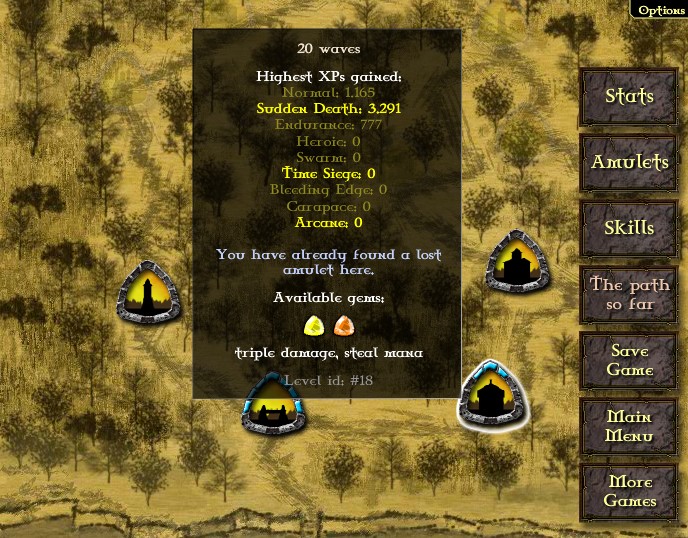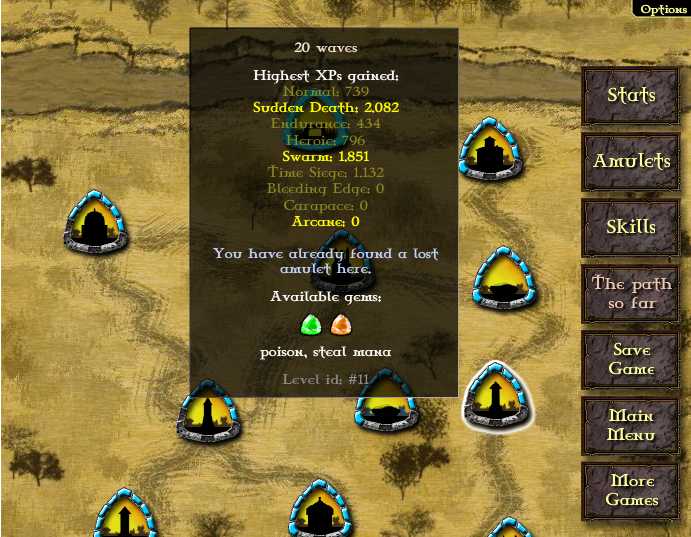


Place your towers in positions where they can cover the longest path possible. It will have all 8 abilities (in a very small portion each though) and some bonuses to its basic values. If you have all 8 gem types available, you can create a prismatic gem. Try to avoid making gems containing more than two base colors. So if you want to use the special ability of a gem, combine it only with gems of the same type.

If you combine two gems of different types, you get both specials but with a decreased power. Pure gems have the strongest special abilities. This can further be improved with the Dual gem mastery skill. The game remains playable, enjoyable, even winnable, without the additional content, though some level challenges cannot be accessed without the Premium Only game modes.Dual gems are superior to pure gems, they get larger bonuses to their damage, range, and firing speed. The extra skill points will help you crush earlier levels with ease, but later levels still demand careful attention to where and how you apply your resources, simply providing you with an enhanced array of options. Labyrinth manages to walk a fine line between genuinely rewarding a player for their financial contribution and breaking the game. Many webgame premium rewards are the equivalent of handing the player a tactical nuke when before they'd had to rely on a butter knife. Somewhere around the 20 hour mark, when I found I was still enjoying the game, I decided that the makers had earned the price of a sandwich from me, and sprung for it. For $5 you receive extra skill points, access to new games modes, new levels, and new skills to plug experience points into. Unlike its predecessors, Gemcraft Labyrinth contains "premium" pay-to-play content.
#Gemcraft chapter 0 guide full#
One day, monsters attack, and a mysterious path opens up, leading you deeper and deeper into a twisting maze full of goodness knows what. The basic setup is that you are a young mage sent to defend a small backwater village and wait to complete some kind of test. Defeating certain levels triggers brief cutscene exposition, and then its back to the gameplay. Speaking of story, it is spooned out in extremely small doses. A collection of top-down views of vaguely invertebrate beings that crawled out of a Lovecraft story. The enemies come in a variety of shapes and sizes, and yet at the same time manage to be almost nondescript. There's no background music to speak of, just the soft sound of distant, howling wind, in keeping with the blasted landscape. It's a world of stone, earth, shadows and marshes, punctuated by the colorful gems. This is not a world of sunlight, green grass and blue skies. That's not to say that thought has not been put into the look at feel of the game. For all its complexity, Gemcraft Labyrinth could most generously be described as aesthetically spartan. You'll notice that I've spent most of this page talking about the game mechanics, and not so much about the art, story, and sound. You can also combine gems of different types, broadening their abilities, though it's a calculated risk, as the combined gem will be less than the sum of its parts. The gems can be upgraded to provide greater tiers of range, damage and effectiveness. You have at your disposal eight types of gems, each with distinct abilities. But these serve as platforms for the real game pieces: the eponymous gemcraft.

You still build towers and traps on the game board.
#Gemcraft chapter 0 guide series#
Zombies or Kingdom Rush, the Gemcraft series takes a modular approach to the concept of Tower Defense. At any rate, while Game In A Bottle may have funny ideas about counting, the developers have a good grasp of solid game design, resulting in a deep and complex tower defense game. So in case you missed it, the sequence is: Chapters 1, 0, Blank, and 2. Well, technically it's the "Lost Chapter", which was preceded by Chapter Zero, and Chapter One before that. Gemcraft Labyrinth is the third chapter in the Gemcraft tower defense series by developer Game In a Bottle.


 0 kommentar(er)
0 kommentar(er)
